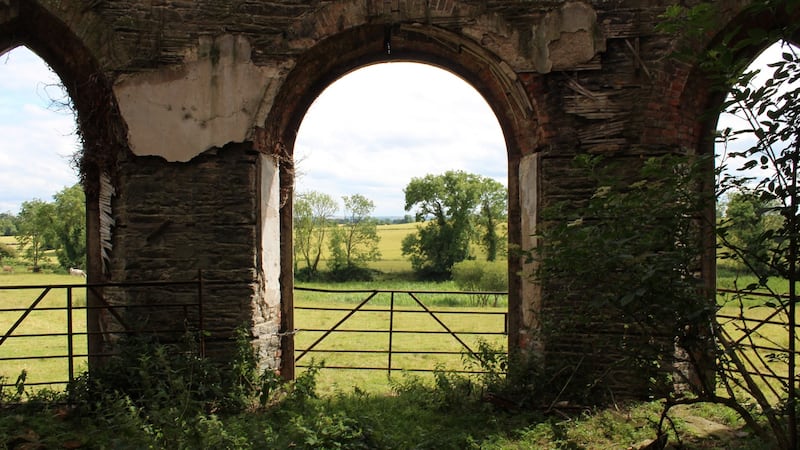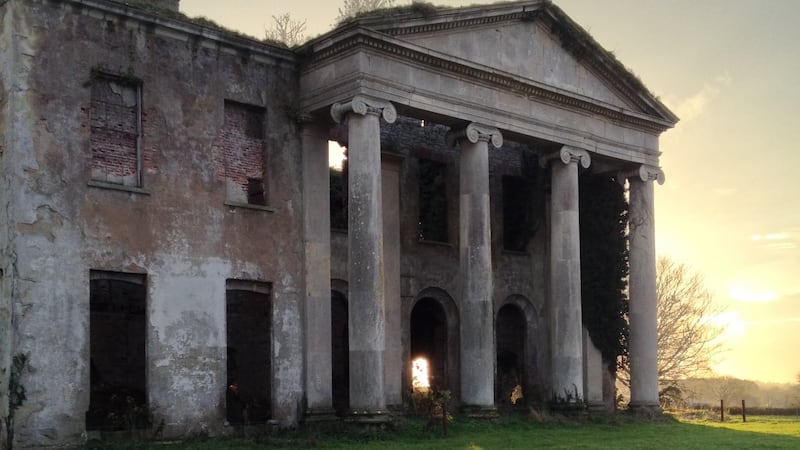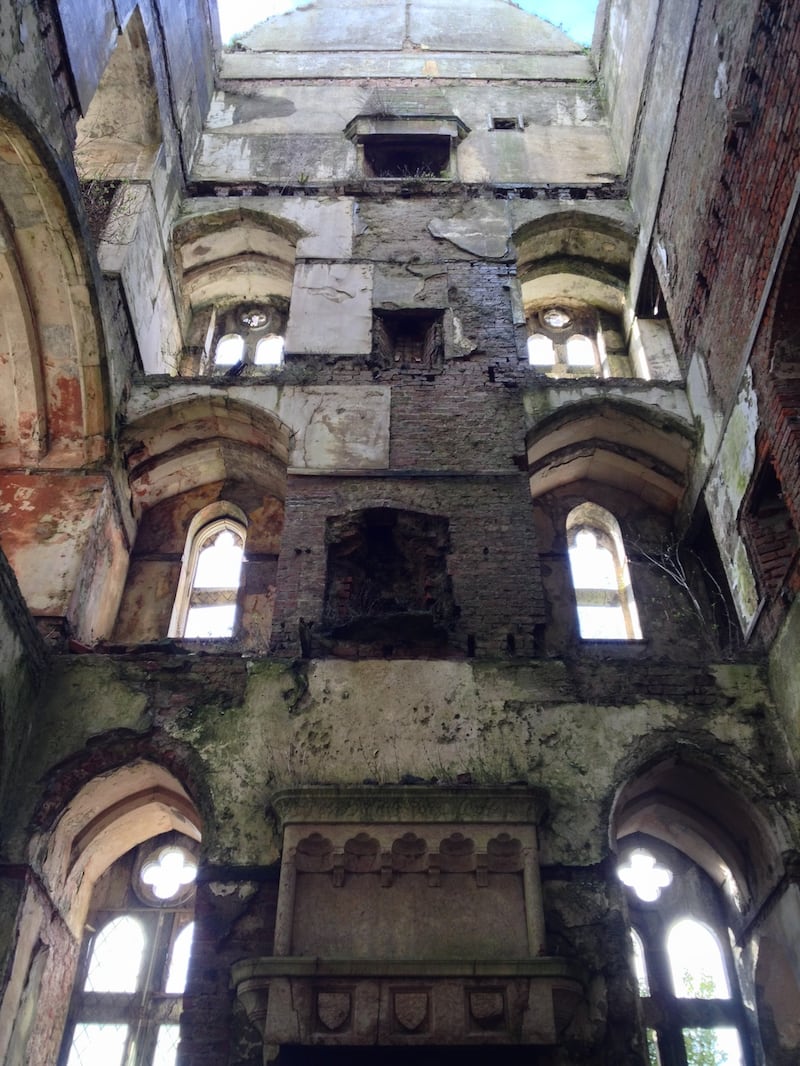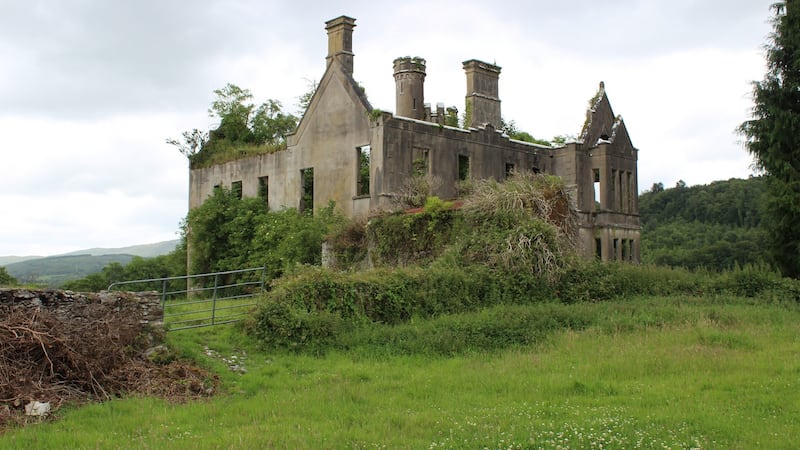In 1842 a German writer and geographer called Johann Georg Kohl travelled around Ireland, publishing an account of his journey the following year. "Of all the countries in the world", he observed, "Ireland is the country for ruins. Here you have ruins of every period of history, from the time of the Phoenicians down to the present day... each century has marked its progress by the ruins it has left. Nay, every decade, one might almost say, has set its sign upon Ireland, for in all directions you see a number of dilapidated buildings, ruins of yesterday's erection."
Not a lot has changed since then, other than subsequent decades supplementing the number of ruins found here almost 180 years ago.

It is hard to judge whether Kohl was being critical or merely observational. Or indeed whether he derived satisfaction from what he had noticed on his Irish tour. Because, for some people, ruins have always exerted a particular, perverse appeal. Sixty-five years ago English author Rose Macaulay wrote an entire book called Pleasure of Ruins. Reading it is like going through a roll-call of the dead, and somehow both revelling in their demise while mourning their loss.
For almost as long as her book has been in print, I have been indulging in what Macaulay called the morbidity of ruins, able to satisfy my addiction in Ireland because there is just so much material on which it can feed. Over this time, some of the sites I have visited were well known, and even well frequented. They’re good enough in their own way, but a popular ruin is unlikely to satisfy the appetite of a true aficionado.
No one should delight in decay, and yet there is a kind of pleasurable grief in coming across an abandoned building
“Look on my Works, ye Mighty and despair!” proclaimed Shelley’s Ozymandias. By which he did not mean the coach park, coffee shop or interpretative centre. A well-preserved ruin – ivy removed, masonry cleaned up, gravel paths installed between neatly trimmed lawns – can no doubt expect a longer life in the twilight, but for those of us who require our masonry to crumble and our ivy to clamber, the experience will always disappoint.

When the vegetation is swept away, so too is imagination's opportunity. The romantic ruin is a neglected ruin, and this is where an element of capriciousness occurs. "To delight in the aspects of sentient ruin might appear a heartless pastime," Henry James confessed in Italian Hours (1873), "and the pleasure, I confess, shows the note of perversity."
No one should delight in decay, and yet there is a kind of pleasurable grief in coming across an abandoned building, onto which all sorts of invented histories can be projected.
For those of us who relish such experiences, like all the best kinds of gratification ours usually comes unexpectedly. Often it occurs on one of the country’s many minor roads where above an untrimmed hedgerow comes a momentary glimpse of what appear to be remains of a once-significant structure. A certain amount of hunting then follows, as further brief hints of what might lie ahead are offered. The challenge is to find an approach to the building in question, which is rarely an easy task. Sometimes, if luck holds, around one more corner will be found the dilapidated lodge, the rusted gates, the rutted track disappearing into overgrown woodland: the prize is within reach.

Once found, the place must be explored, a process that usually involves startling rooks who have grown used to the building being theirs alone, and occasionally livestock which, after human inhabitants had left, took up residence in the property: a stand-off with bullocks is not unknown. The floor will be covered in a complex pattern of disintegrating timbers and mouldering plaster, the ceiling, if it still exists, will offer glimpses of a sky never intended to be exposed. There may be remnants of furniture, some bedding rank with damp, a picture precariously hanging on the wall. Who once lived here, and why does no one anymore? The imagination springs to work.
After many years of clambering about such sites, in September 2012 I began to share my interest on a website called The Irish Aesthete. Since then, travelling around the country with just a mobile phone, I have recorded and posted what can be discovered, like a latter-day Mr Kohl. The Irish Aesthete features the full gamut of Ireland's architectural heritage across all 32 counties, but ruins have always had a strong presence. This is inevitable. I would challenge anyone to journey more than a mile in Ireland without coming across at least one building in a state of decay.
The idea of pulling down, or at least tidying up, what remains of the former homestead never seems to be considered. Instead a building is simply abandoned
Where Irish ruins are concerned, there is no hierarchy. From castles to cottages, cathedrals to chapels, ballrooms to barns, we have them all in abundance and at every stage of dilapidation. Our climate, temperate and damp, is conducive to the production of ruins, but so too it seems is our national character. Familiarity with them has bred not contempt but indifference. For example, visitors to this country often notice how, in Ireland, a new house will be built adjacent to the older one, the latter then left to crumble, its owners seemingly indifferent to living beside decrepitude. The idea of pulling down, or at least tidying up, what remains of the former homestead never seems to be considered. Instead a building is simply abandoned, one slate after another falling away until eventually the roof falls in and only the outer walls remain, they in turn gradually surrendering to the elements.

The jilted building is a characteristic of Ireland, customarily dumped for a younger, more attractive model. Make-overs are rare. “Life is too short to discover the reason for all the ruins in Ireland,” wrote Frank O’Connor in 1947, although he later proposed the explanation may be that we Irish lack “any instinct for conserving things.”
Poor conservation habits have certainly played their part in providing each generation with a new batch of ruins. This ought not to be the case because legislation, in the form of the 2000 Planning and Development Act, exists to ensure tumbledown old buildings are, quite literally, a thing of the past. However, as so often in this country there is a wide gap between legislation and implementation, between theory and practice. As a result, some of the pictures I have taken since 2012 can now be considered historical records, because the buildings they feature have since suffered further loss. Regrettably, this scenario looks set to continue: without doubt there are properties across Ireland listed by the relevant local authority for protection which over the coming year will join the ranks of the ruined – additional material for the Irish Aesthete to record. Mr Kohl’s remarks were not just an observation, but also a prediction.
The Irish Aesthete Ruins of Ireland is now available in bookstores, published by Cico Books (stg£16.00)












